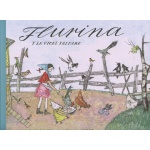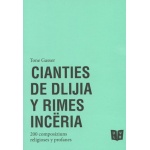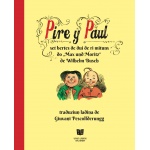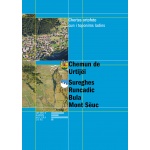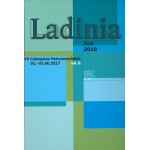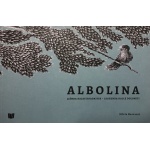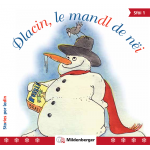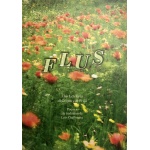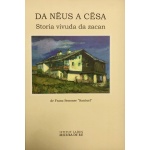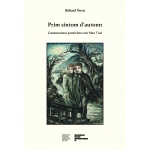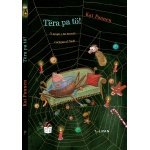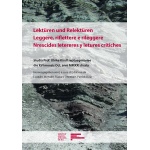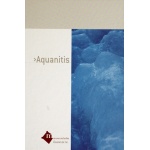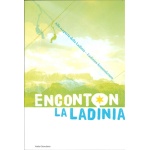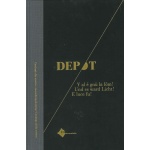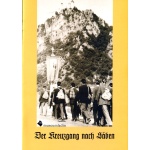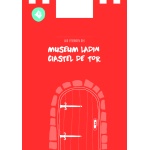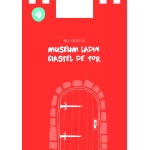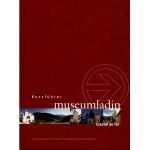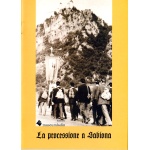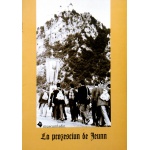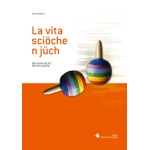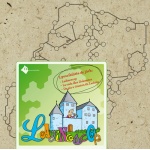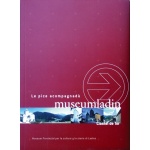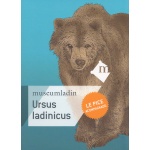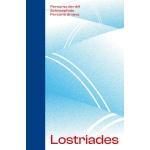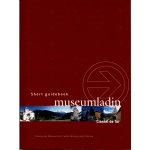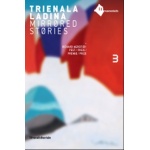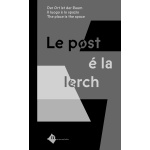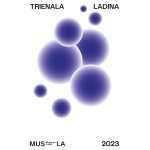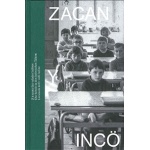Sort de documënt: Revista Ladinia
Titul: Marietta, Tizian und die Ampezzaner. Zur kuriosen (Wirkungs-) Geschichte des ampezzanischen Liebesgedichts. Ara mé noviza
Marietta, Tizian und die Ampezzaner. Zur kuriosen (Wirkungs-) Geschichte des ampezzanischen Liebesgedichts. Ara mé noviza
Strobl Wolfgang
Descriziun: Ladinia XLVI, 059–092
doi: https://doi.org/10.54218/ladinia.46.59-92
La poesia d’amur Ara mé noviza (“A mia amada”) é gnüda scrita tl 19ejim secul tl comun ladin d’Ampëz. La maiú pert arata che l’opera sides gnüda scrita dal injinier ampezan Firmiliano De Gaspari (1828–1877), ince sc’ara podess ester n toch fora dl vedl patrimone de cianties ampezanes. Tl’opera Ampezzo illustrato, n test scrit da De Gaspari (plü dessigü incër le 1860) sön la storia de Cortina, che ne n’é incö baldi nia plü da ciafé, é la rima de 13 strofes gnüda scrita sö por le pröm iade y metüda a desposiziun de n publich plü ampl. I dezens dedô él deplü iadi gnü scrit fora de chësta opera n valgönes strofes, che é insciö gnüdes dades inant, danter l’ater dal pionier dl turism puster Josef Anton Rohracher (1857–1954). Ti pröms agn 1890 â le scritur tirolesc Josef Calasanz Platter (1858–1905) surantut n valgönes strofes fora de na guida turistica de Rohracher dl 1878 y les á adorades por süa cuntia Castell Majon ambientada a Cortina d’Ampëz. Tl ann 1892 â n vijitadú d’Ampëz che gnô dala Talia dl Nord, al podess ester l’iredentist y leterat Albino Zenatti, scrit jö cin’ strofes dla poesia dialetala y les á spo publicades tla “Gazzetta di Venezia” coche rima nia conesciüda de Tiziano, la colian cun na vedla tradiziun d’Ampëz, aladô de chëra che l’artist conesciü dl Renascimënt foss nasciü a Cianpo de Sote - Campo di Sotto. Tl ann 1909 é n valgönes strofes dla medema poesia gnüdes publicades ciamó n iade tla stampa da vignidé, te revistes y guides dl raiun coche opera che dô ester bonamënter de Tiziano. Y ince plü tert ciamó n’án nia orü stlüje fora daldöt la paternité leterara dl artist nasciü a La Pli de Ciadura (Piee de Cadore - Pieve di Cadore). Vëi él che tl ann 1892 á n falsificadú plü o manco da talënt ciaré da abiné capital y davagn fora dla scoverta de na poesia che ess podü ester de Tiziano, ti don lapró ciamó de n comedun ai ampezans.
The love poem Ara mé noviza (“To my beloved”) was written in the 19th century in the Ladin municipality of Ampezzo. This composition is mostly attributed to the Ampezzo engineer Firmiliano De Gaspari (1828-1877), but it could also be a piece of ancient Ampezzo song literature. The 13-stanza poem was recorded – and thus made accessible to a larger audience – for the first time in Ampezzo illustrato, a publication about the history of Cortina written by De Gaspari (probably around 1860), which is unfortunately lost or missing today. In the following decades, several stanzas from this work were repeatedly copied and disseminated, among others by the Pustertal tourism pioneer Josef Anton Rohracher (1857–1954). At the beginning of the 1890s, the Tyrolean author Josef Calasanz Platter (1858–1905) copied a few stanzas of the poem from a travel guide published by Rohracher in 1878 and used them for his narrative Castell Majon, set in Cortina d’Ampezzo. In 1892, a tourist from the North of Italy who visited Ampezzo, perhaps the irredentist and literary scholar Albino Zenatti, copied five stanzas of the dialectal poem and subsequently published them in the “Gazzetta di Venezia” as an unknown poem by Titian, linking it to an old local Ampezzo tradition according to which the important Renaissance artist was born in Campo di Sotto. In 1909, some stanzas of the same poem were again spread in the daily press, journals and tourist guides as a work of Titian. And even in more recent times, people did not want to completely rule out the authorship of the artist born in Pieve di Cadore. In reality, a more or less skilful forger was at work in 1892, who probably wanted to make capital and profit from the discovery of an alleged poem by Titian and also to defraud the people of Ampezzo.
doi: https://doi.org/10.54218/ladinia.46.59-92
La poesia d’amur Ara mé noviza (“A mia amada”) é gnüda scrita tl 19ejim secul tl comun ladin d’Ampëz. La maiú pert arata che l’opera sides gnüda scrita dal injinier ampezan Firmiliano De Gaspari (1828–1877), ince sc’ara podess ester n toch fora dl vedl patrimone de cianties ampezanes. Tl’opera Ampezzo illustrato, n test scrit da De Gaspari (plü dessigü incër le 1860) sön la storia de Cortina, che ne n’é incö baldi nia plü da ciafé, é la rima de 13 strofes gnüda scrita sö por le pröm iade y metüda a desposiziun de n publich plü ampl. I dezens dedô él deplü iadi gnü scrit fora de chësta opera n valgönes strofes, che é insciö gnüdes dades inant, danter l’ater dal pionier dl turism puster Josef Anton Rohracher (1857–1954). Ti pröms agn 1890 â le scritur tirolesc Josef Calasanz Platter (1858–1905) surantut n valgönes strofes fora de na guida turistica de Rohracher dl 1878 y les á adorades por süa cuntia Castell Majon ambientada a Cortina d’Ampëz. Tl ann 1892 â n vijitadú d’Ampëz che gnô dala Talia dl Nord, al podess ester l’iredentist y leterat Albino Zenatti, scrit jö cin’ strofes dla poesia dialetala y les á spo publicades tla “Gazzetta di Venezia” coche rima nia conesciüda de Tiziano, la colian cun na vedla tradiziun d’Ampëz, aladô de chëra che l’artist conesciü dl Renascimënt foss nasciü a Cianpo de Sote - Campo di Sotto. Tl ann 1909 é n valgönes strofes dla medema poesia gnüdes publicades ciamó n iade tla stampa da vignidé, te revistes y guides dl raiun coche opera che dô ester bonamënter de Tiziano. Y ince plü tert ciamó n’án nia orü stlüje fora daldöt la paternité leterara dl artist nasciü a La Pli de Ciadura (Piee de Cadore - Pieve di Cadore). Vëi él che tl ann 1892 á n falsificadú plü o manco da talënt ciaré da abiné capital y davagn fora dla scoverta de na poesia che ess podü ester de Tiziano, ti don lapró ciamó de n comedun ai ampezans.
The love poem Ara mé noviza (“To my beloved”) was written in the 19th century in the Ladin municipality of Ampezzo. This composition is mostly attributed to the Ampezzo engineer Firmiliano De Gaspari (1828-1877), but it could also be a piece of ancient Ampezzo song literature. The 13-stanza poem was recorded – and thus made accessible to a larger audience – for the first time in Ampezzo illustrato, a publication about the history of Cortina written by De Gaspari (probably around 1860), which is unfortunately lost or missing today. In the following decades, several stanzas from this work were repeatedly copied and disseminated, among others by the Pustertal tourism pioneer Josef Anton Rohracher (1857–1954). At the beginning of the 1890s, the Tyrolean author Josef Calasanz Platter (1858–1905) copied a few stanzas of the poem from a travel guide published by Rohracher in 1878 and used them for his narrative Castell Majon, set in Cortina d’Ampezzo. In 1892, a tourist from the North of Italy who visited Ampezzo, perhaps the irredentist and literary scholar Albino Zenatti, copied five stanzas of the dialectal poem and subsequently published them in the “Gazzetta di Venezia” as an unknown poem by Titian, linking it to an old local Ampezzo tradition according to which the important Renaissance artist was born in Campo di Sotto. In 1909, some stanzas of the same poem were again spread in the daily press, journals and tourist guides as a work of Titian. And even in more recent times, people did not want to completely rule out the authorship of the artist born in Pieve di Cadore. In reality, a more or less skilful forger was at work in 1892, who probably wanted to make capital and profit from the discovery of an alleged poem by Titian and also to defraud the people of Ampezzo.
Lingaz: DE
Data: 2022
Autur: Strobl Wolfgang
Copyright: Istitut Ladin Micurá de Rü - ISSN 1124-1004

